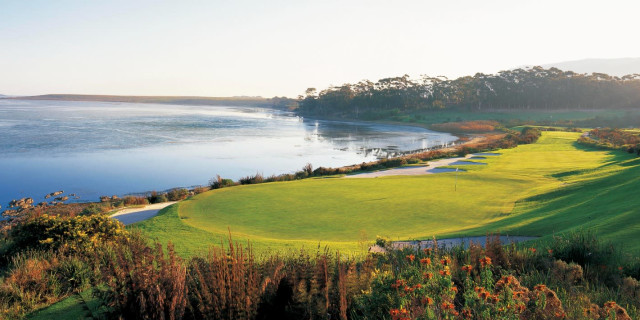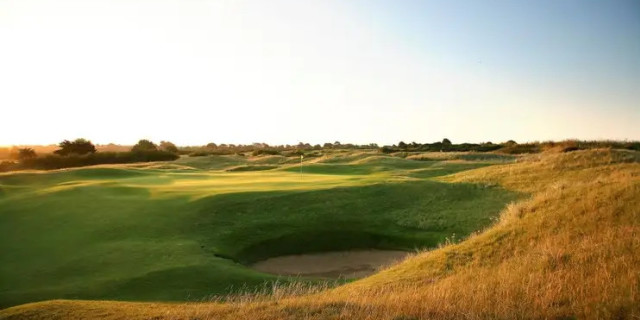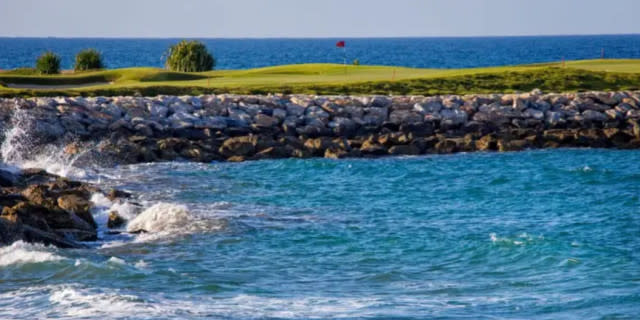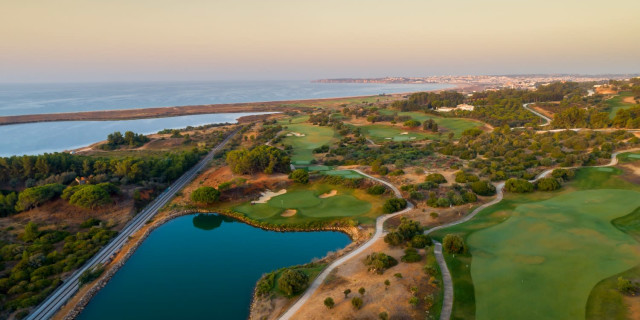
What Makes Royal St George's England's Ultimate Open Venue
Golf tournaments are notoriously difficult to win. Of course, you have the generational talents – Rory McIlroy, Tiger Woods or Phil Mickelson – but for the vast majority of golfers? It’s tough out there.
Every sport has its pinnacle; football has the FIFA World Cup; tennis has Wimbledon and cricket has the Ashes. The difference between these sports and golf? We have four. While that is true, there are two that are judged to be superior: The Masters and The Open Championship.
Augusta is the only consistent host of a major championship, so we all have a great understanding of the golf course and the difficulty that the players will inevitably find themselves in. The Open, however, that’s different.
The venues are on a rotational list, so we get to experience them roughly every 10-12 years. Sure, the players have played at the venues occasionally, but they don’t know them anywhere near as well as Augusta.
Royal St George’s Golf Club

Royal St George’s Golf Club was established in 1887, in Sandwich, Kent. It was designed by Laidlaw Purves, who was a Scottish-born surgeon who worked in London as an aural and ophthalmic surgeon.
Its par is 70 and its length is 7,204 yards. It has hosted The Open Championship on 14 times previously – first in 1894 – and it is the only golf course, part of the rotational basis to host the championship, that is located in the south of England. It’s different.
Some of the players who have won here are: Henry Cotton, Walter Hagen, Harry Vardon, Ben Curtis, Greg Norman and of course, we can’t forget the last victor in Kent, Darren Clarke.
The club’s Challenge Cup, which is one of the oldest amateur events in golf, continues to be played annually – having started in 1888. It is typically contested over 36 holes and the only omissions were during wartime.
The creator of the James Bond universe, Ian Fleming, used the Royal St George’s course under the name ‘Royal St. Marks’ in his 1959 novel, Goldfinger. When he perished, he was Captain-elect of the golf club.
It wasn’t all positive, however, as the venue was omitted from the rotational list for 32 years, between 1949 and 1981. Thankfully, it made a return after the rebuilding of three holes, tee changes to two holes and improved road links.
While there are many components that make this golf course such an exciting Open venue, it is known for having the deepest bunker on the entire rota, which is situated on the fourth hole.
Royal St George’s has character, history and an unrivalled passion for golf. There is a reason why this is the only venue deemed worthy enough to host championship golf in the south – it is a special place where special things happen.
Allow me to remind you why.
1894 Open Championship
The very first held in Kent, but the 34th Open Championship. John Henry Taylor picked up his first major championship of five after besting Douglas Rolland by five strokes – this was the first time that the Open was held outside of Scotland.
While we don’t have the luxury of video highlights, there is information from the very first major held in England. Back then, they done things a little differently. While the tournament was contested over four rounds, it was split into two days – 36 holes per day. Exhausting.
Taylor led the tournament after two rounds, but strong winds removed scoring completely from the equation. His first two rounds equated to 164, which provides a fine example of the difficulty.
The Englishman further increased his lead after the third round and after 37 on the front nine of his final outing, Taylor needed to score 48 or less. Despite a slight wobble on the 13th, where he carded seven, he came back in with 44 to finish, and an overall 81 to secure the championship.
1911 Open Championship
Harry Vardon – who holds the record for the most Open Championships with six – won for a fifth time during the 1911 Open, and it was his second win at Royal St George’s.
There were 226 players scheduled to take the field, which made formatting the event problematic. With so many players, it was impossible for them all to play 18 holes in one day.
The players were branched off into two sections, with the first 36 holes to be played across three days. Vardon had held the lead with one round to play, but an uncharacteristic 80 in his final outing allowed Frenchman and 1907 Open Champion, Arnaud Massy, to force a playoff after two woods and two putts secured par on the last.
The playoff was contested across 36 holes – could you imagine that now(!) – and Massy held the lead after the opening ten. A six at 14 and an absolute disastrous seven at 17 allowed Vardon to build a comfortable lead of five strokes after the first playoff round.
When the players reached the 35th playoff hole, the man from Jersey had held a ten-stroke advantage. After his opponent had found the thick rough, he picked up his ball and conceded the championship.
His final win came three years later, in 1914. Overall, Vardon had won six Open Championships and the 1900 U.S. Open.
1985 Open Championship
This was the 114th edition of the Open and the 12th held in Kent. Sandy Lyle secured his first major championship after an unbelievable display.
It was also the final year that the double cut had been utilised, where players weren’t only removed after 36 holes, but also after 54 too.
There were plenty of past winners in the field, including Lee Trevino (1971, 1972), Seve Ballesteros (1979, 1984), Tom Watson (1975, 1977, 1980, 1982, 1983) and Bob Charles (1963).
Astonishingly, Jack Nicklaus, Tony Jacklin and Bill Rogers missed the original cut, while Gary Player was chopped after 54 holes.
Lyle had been instrumental throughout the tournament and posted an opening 68 to be in a tie for second. A 71 had pushed his overall score back a shot, but he gained the co-lead after the majority of the field took a Royal St George’s battering.
Heading into the fourth and final round, the Scotsman was three shots back but, similarly to the second outing, difficult conditions meant that even-par was enough to secure his maiden major title.
He would later add the green jacket to his collection in 1988.
2011 Open Championship
The 140th Open Championship and the most recent to be held in the south of England, it will always go down as one of the most emotional majors on record.
Darren Clarke had secured his one and only major championship and dedicated the win to his two children and his late wife, Heather.
The course was lengthened by 105 yards and par had returned to 70, having been 71 in 2003 when the fourth hole played a par-5.
The first round saw Thomas Bjorn – who gained entry to the event as fifth alternate – and amateur Tom Lewis share the lead.
Lewis became the first amateur to hold a share of the lead after 18 holes since Michael Bonallack in 1968. Moreover, the Englishman also carded the lowest single-round score by an amateur at The Open.
It was during the second round where Clarke’s name rose in prominence. After two back-to-back 68s, he shared the clubhouse lead and remained in that position as the winds grew rampantly as the day progressed.
World number 1 and 2, Luke Donald and Lee Westwood, had both failed to make the cut. Tom Watson became the oldest man ever to make an Open cut - thanks to an ace on the par-3 sixth.
Clarke’s third outing of 69 saw him in the final pairing for Sunday. Dustin Johnson also secured that final position, which meant that he would be in the final Sunday pairing for the third time in only six majors.
On the final day, Phil Mickelson looked set to cause trouble, as he went out in 30 (-5) and tied his lowest nine-hole stretch in majors.
Johnson had relentlessly pursued Clarke through the opening 13 holes, but greed would be his downfall on the following.
Opting to reach the green in two, the American pulled out a 2-iron. A slight push to the right resulted in Johnson’s ball plummeting out of bounds. He was out of contention.
Clarke held on to win his first Open Championship in 20 attempts. He was victorious by three strokes where both Johnson and Mickelson finished joint runner-up.
The Northern Irishman had become the oldest debut major winner and the oldest Open champion since Roberto De Vicenzo.
Royal St George’s is steeped in rich Open history. It is the only venue to be located in the south of England but, above all, it is a historic area that has seen the making – and unmaking – of many fine golfers. Here’s to hoping that 2021 will be reflected back upon so fondly as those in this list.
Royal St. George’s Open Winners
- 1894, J.H. Taylor – 326, £30
- 1899, Harry Vardon (3) – 310, £30
- 1904, Jack White – 296, £50
- 1911, Harry Vardon (5) – 303, £50
- 1922, Walter Hagen – 303, £75
- 1928, Walter Hagen (3) – 300, £100
- 1934, Henry Cotton – 283, £100
- 1938, Reg Whitcombe – 295, £100
- 1949, Bobby Locke – 283, £300
- 1981, Bill Rogers – 276, £25,000
- 1985, Sandy Lyle – 282, £65,000
- 1993, Greg Norman (2) – 267, £100,000
- 2003, Ben Curtis – 283, £700,000
- 2011, Darren Clarke – 275, £900,000
Related Content
Related Content: The Open Royal St Georges Kent Golf Courses England daily picks Courses





